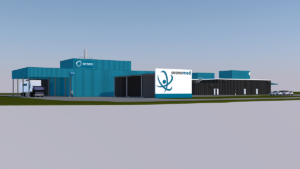Philips leads €6.3m EU liquid biopsy consortium
The EU is investing another €6.3m into the blood diagnosis of primary breast cancer and rectal cancer. In the 4-year LIMA project, Royal Philips will lead a SME consortium that combines liquid biospy of circulating tumour cells (CTCs) with Magnetic Resonance Imaging (MRI).
The project complements the €18.3m Cancer-ID project, in which Big Pharma-led technology companies and academic researchers seek to assess the feasibility of different liquid biopsy techniques to diagnose breast and colon cancer. The new Horizon 2020-funded Liquid biopsies and IMAging for improved cancer care (LIMA) project is focussed on increasing the accuracy of genetic and functional characterisation of primary breast cancer and rectal cancer cells, harvested from blood with British Angle plc’ ParsortixTM system. LIMA participants will combine Philips MRI know-how with cell-based and DNA-based liquid biopsy techniques to develop an integrated, clinically tested approach for personalised cancer treatment.
The promise of personalised medicine is based on the assumption that responders to targeted therapies can be identified and monitored by means of molecular biomarkers. However, as therapy resistance to targeted therapies can occur within months, methods for predicting relapse and switch therapy are urgently needed. According to experts, identification of circulating cancer cells or DNA/RNA expressing tumour biomarkers in a patient’s blood could become a way to minimal-invasively identify minimal residual disease or early signs relapse. On the other hand, MRI gives physicians information about the location of the cancer and functional information about the tumour tissue composition.
Within the Philips-led consortium diffusion weighted MRI and perfusion MRI, which provide imaging biomarkers in oncology, will be further developed for tumour detection and characterisation. Furthermore, properties of MRI contrast at and around the tumor will be analysed to shed light on the tumour grade and biological status. While clinical research studies will be carried out at UMC Utrecht and at French INSERM, a range of SME will contribute latest technologies for liquid biopsy: Agena Bioscience GmbH, DiaDx and Stilla Technologies will provide technologies for analysing circulating tumour-DNA, ALS Automation Lab Solutions GmbH will provide detection and selection methods for single CTC, which were isolated with Angle‘s Parsortix platform.
"In collaboration with our partners we will combine a range of liquid biopsy technologies, which give us more detailed molecular information, with advanced MRI techniques, which could enable us to better understand the impact of treatment at an early stage," said Hans Hofstraat, innovation programme manager at Philips. "This has the potential to improve patient outcomes and potentially represents a significant step forward in delivering personalized cancer treatment."
A study presented recently at the ESMO 2017 Cancer Congress in Madrid, however warns that biomarkers utility should not be overestimated. "The inappropriate diagnostic use of tumor markers can cause anxiety, lead to unnecessary testing, delay diagnosis, and increase costs," said study lead Dr. Craig Barrington from the Register of Clinical Oncology of the South Wales Cancer Centre. For six months, he and colleagues had investigated what tests of multiple tumour markers actually contributed to the cancer diagnosis of patients. Of the 1,747 inquiries from physicians to determine multiple tumour markers, the tests actually only helped diagnose a subset of 35 patients (2%). Extrapolated to one year, that would mean a waste of more than €100,000 alone at the Welsh centre. The authors therefore call for further education of clinicians to better assess whether a biomarker test is appropriate or not.


 Orano Med SA
Orano Med SA fvm.dk
fvm.dk Office of Congresswoman Ayanna Pressley - https://pressley.house.gov/press-kit/
Office of Congresswoman Ayanna Pressley - https://pressley.house.gov/press-kit/